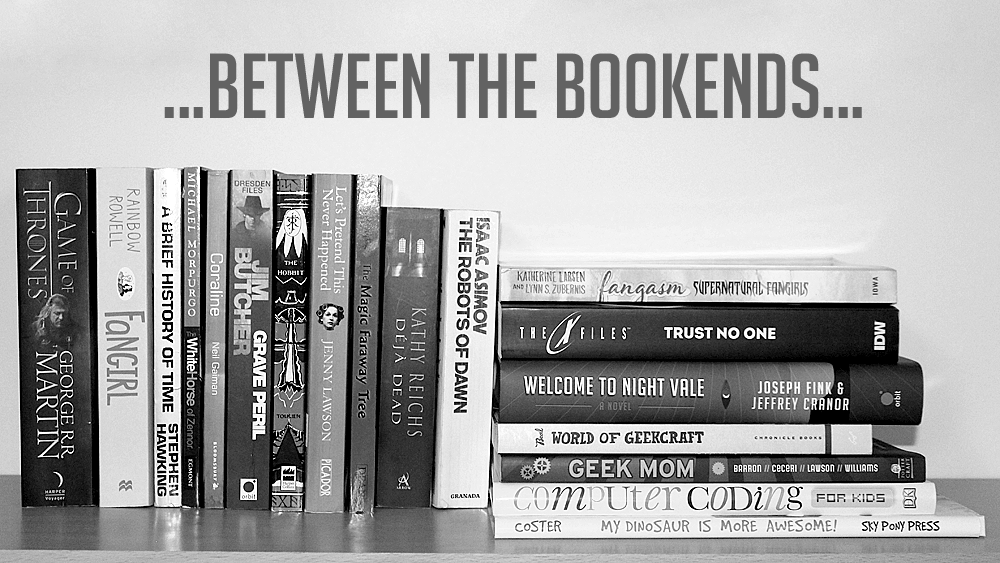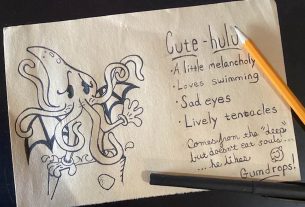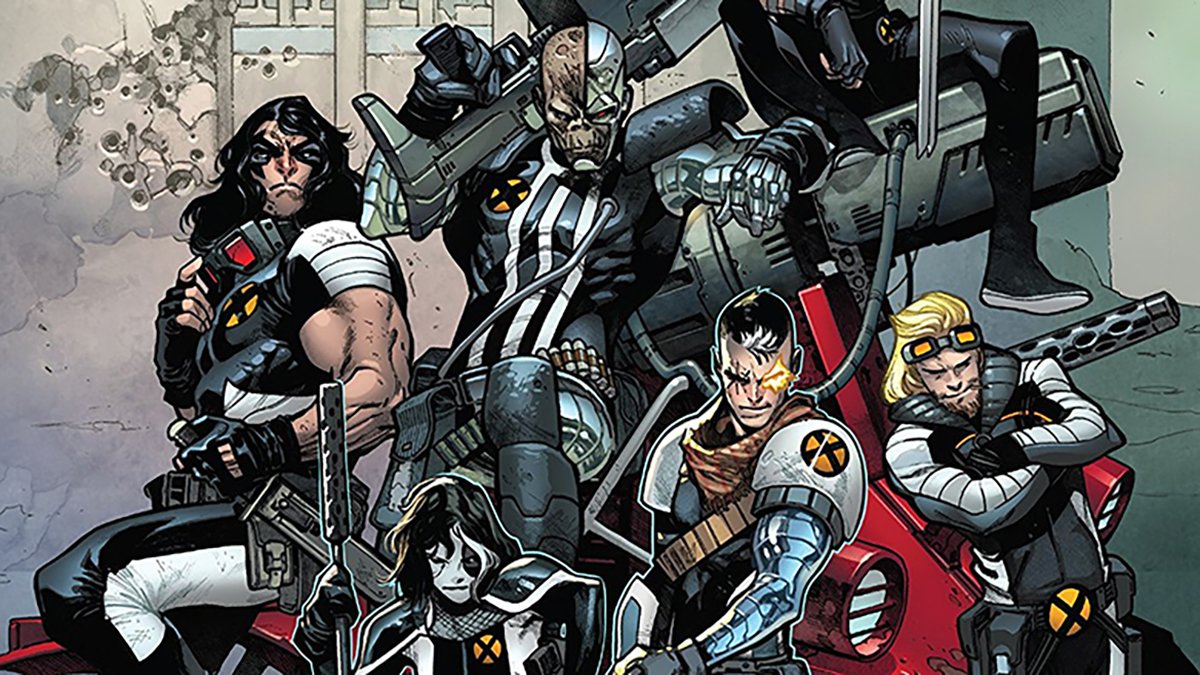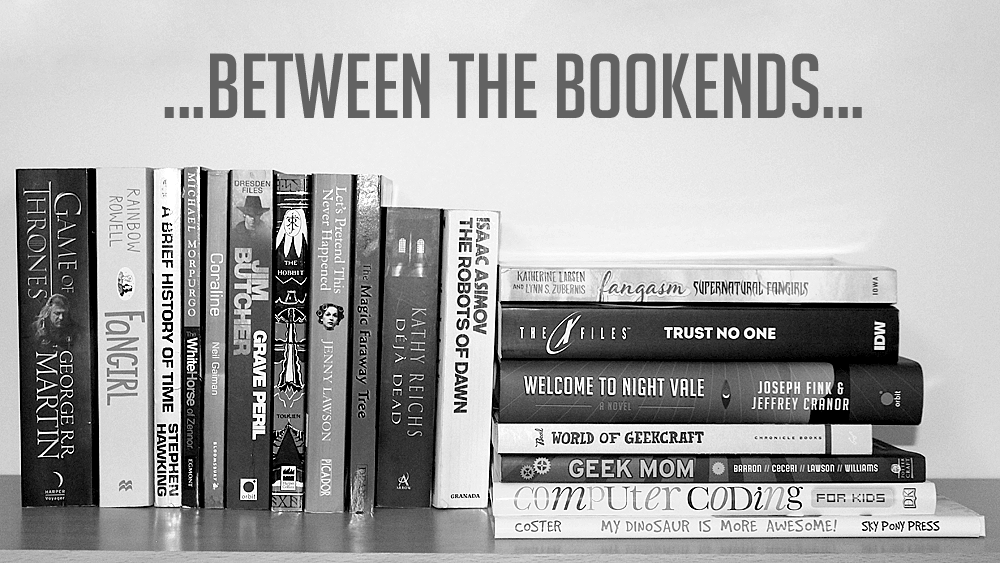
In this month’s Between the Bookends, Sophie, Amy, and Kay spring into spring with books featuring everything from becoming a successful Instagrammer to kids on magical adventures to Marvel’s unusual direction for the Spider-Verse in 2015. We hope you find something to enjoy.

Watch Us Rise by Renee Watson & Ellen Hagan
Sophie started out her month by reading Watch Us Rise, the story of two teenage girls, Jasmine and Chelsea, who attend a progressive high school in Washington Heights, New York City. Together, the girls found a women’s rights club which soon sees them become local stars as their blog posts about intersectional feminism find traction and get their fellow students talking. However, the blog also attracts trolls and the group is soon shut down by their principal. The girls refuse to be silenced and continue to campaign in earnest for their right to be heard.
While this book will no doubt be inspirational to many teens, Sophie found it hard to take seriously. Both Chelsea and Jasmine are so two-dimensional in their passion over women’s rights that they turn into little more than stereotypes and even the attempts to make them more three-dimensional (Jasmine’s father has cancer, Chelsea is a poet with a crush on a cute boy in her year) end up becoming caricature-ish. A large portion of the book was written in poem format through Chelsea’s work which did add interest, but more in an eye-rolling type of way.
The book ends up becoming laughable for just how unbelievably focused on social justice everything is. Even the girls’ high school is implausible for the way every student is made to attend an after-school social justice-themed club and every class is focused on social justice. And it really is EVERY class. The girls don’t have a regular science class, their units this semester include “The Use of Human Subjects in Medical Research”, and “The Environment, Climate Change, and Racism” while their gym class has them running out into their local area in pairs to explore the different kinds of stores they can see in affluent vs impoverished areas.
This is a book which had the potential to be great but ended up almost making a mockery of its subject through sheer heavy-handedness instead.
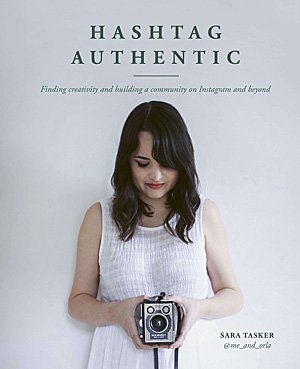
Hashtag Authentic by Sara Tasker
Next up on Sophie’s list was Hashtag Authentic by Sara Tasker, the Instagrammer behind the popular me_and_orla account. Sophie wasn’t one of Sara’s followers (although she is now) but had wanted to improve her Instagram feeds (easyqueenie and marnie_salem_and_artemis) – something which Hashtag Authentic promised to help do.
The book is packed full of useful insights into improving your feed, whether you run a commercial Instagram account, one for a specific subject such as your pet or vehicle, or just a mixed bag account showcasing your day-to-day life. Sara advises on how to take great shots no matter what type of camera you own, edit well, use filters effectively, make the most of captions and hashtags, and also how to avoid the app taking over your life. She also guides you through several short exercises designed to help you improve your feed, and steer Instagram’s algorithms toward showing you more content you’ll love.
There’s advice on keeping safe in this book too, both from trolls out to attack you, and from your own inner voice which is probably telling you not to post certain photos. Sara’s comment about how, by posting our own selfies and making sure our bodies appear in our photos, we can help to increase the diversity we long to see online was something that really spoke to Sophie. As was her advice on making sure we don’t try to “please too many people at once” and instead, focus on making something that WE love.
On top of all this, Hashtag Authentic is beautiful to look at. Nearly every page features Sara’s photos from her idyllic looking life in rural Yorkshire and it made Sophie want to take a trip up there immediately. Sophie has been putting Sara’s advice into practice and is already happier with her Instagram accounts which are looking more beautiful than ever thanks to this book.
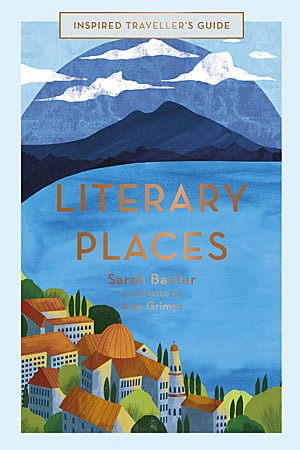
Literary Places by Sarah Baxter
Sophie’s next book was Literary Places by Sarah Baxter, a look at the real world locations that inspired and became integral parts of many classic novels. Each short chapter explores a given location and novel, tying real locations to fictional events or looking at the real buildings that inspired fictional variations.
Literary Places travels all over the world, from New York to Cairo, the Yorkshire Moors to Kabul, London to the Australian Outback. Each of the novels selected is intrinsically linked to its location and could not be transplanted elsewhere. Ulysses could not take place outside of turn-of-the-20th-Century Dublin, nor could Les Miserables take place outside 19th Century Paris, or To Kill a Mockingbird outside the American south in the 1930s.
In the book, Baxter gives a brief overview of the novels she is discussing, then takes us on a short tour of the places that inspired it, pointing out landmarks that can be visited should you wish to take a pilgrimage. This is interspersed with illustrations by Amy Grimes whose bright and bold style helps capture the feel of these varied places. Sophie felt these descriptions were a little short and vague at times, often surprising her by their abrupt endings. This is very much a picture postcard look at these places, not a detailed essay.
Because Literary Places focuses heavily on the so-called Western Canon, the authors featured are not exactly diverse. While authors from around the world are included, of the 25 books featured in this volume, 17 were written by men, and 23 by white people. Books located in Europe account for more than 50% of the total too with the Continents of Africa and South America only covered by two titles each.
Sophie felt that while Literary Places has a great concept, it could have benefited by delving deeper and expanding its horizons a little further.
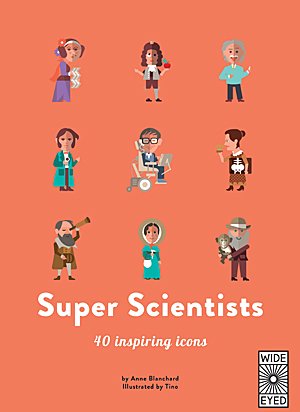
Super Scientists by Anne Blanchard
Last summer, Sophie immersed herself in the 40 Inspiring Icons series from Wide Eyed Editions, so she was delighted to hear that a new volume had been released in the series: Super Scientists.
These books are packed with short, fact-filled biographies of 40 famous people or groups from their subject, ordered in roughly chronological order. Super Scientists begins with Thales who was born in Ancient Greece in 600 B.C. and brings itself up-to-date with modern-day scientists including Sir Tim Berners-Lee, Stephen Hawking, and Neil Degrasse Tyson. Each biography is illustrated cartoon style and filled with facts about their personal lives, careers, and important discoveries.
Sophie found herself disappointed by the lack of women included in the book (seven out of the 40 people featured are female) but wonders how much of this is simply due to the lack of records regarding female scientists in antiquity, because many of the names she would have hoped to see are there: Mary Anning, Ada Lovelace, Marie Curie, and even Hypatia of Alexandria. Still, there are many more who could have been added to bring the percentage up to at least 25% female.
Sophie was pleased to note that at least a handful of non-Western scientists had been included, such as Zhang Heng, Brahmagupta, and ibn al-Haytham (better known as Alhazen) – although again, they only account for a very small percentage of the book, leaving the vast majority of its pages for white men. This is always a difficult issue in books of this nature because no one can deny that names like Newton, Darwin, or Einstein deserve places in a book of famous scientists, but it is critical to find a balance between loading the book with the same white male faces to the detriment of lesser-known diverse ones and making sure those important contributions are recognized.
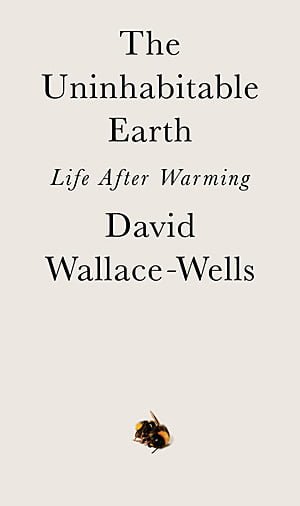
The Uninhabitable Earth by David Wallace-Wells
Sophie’s final book of the month was The Uninhabitable Earth by David Wallace-Wells. It is easily the most terrifying book she has read in a long time, probably ever, a no holds barred look at the realities of climate change. What is likely to happen to our planet, why, and what we need to do to try and slow it down – we’re already far beyond stopping it entirely.
Past the introduction, the book is divided into 12 “Elements of Chaos” with titles that will inspire anxiety in and of themselves. “Hunger”, “Downing”, “Unbreathable Air”, “Dying Oceans” and “Economic Collapse” are among them, each one an eye-opening exploration of just how bad the situation has become while we’ve looked the other way. However bad you think the situation is, you won’t be prepared, and Sophie found herself horrified again and again by the truth of what may happen in the coming decades. The Uninhabitable Earth isn’t 100% doom and gloom though. There are discussions of the ways we can fight back, we just need to get everyone on board. Fast.
The danger with a book like this is that, at a point, the news becomes so depressing, so thoroughly overwhelming, that it is easy to simply shut down. Indeed, Wallace-Wells devotes time to exploring the mental health implications of climate change and the people who have already cut themselves off from society, fearing its imminent collapse, and at one point he even turns to the reader and calls us “brave” for having made it through so far.
Sophie struggled to read The Uninhabitable Earth and had to stop reading at all before bed due to nightmares. She would still recommend you pick it up, however, because only by opening our eyes to reality do we stand a chance at changing the future.
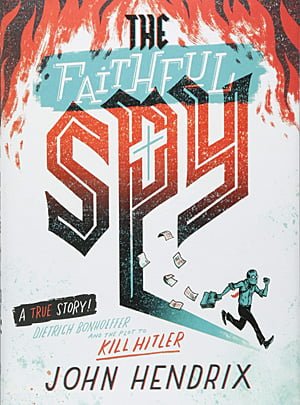
The Faithful Spy: Dietrich Bonhoeffer and the Plot to Kill Hitler by John Hendrix
Amy doesn’t want to bury the lede: The Faithful Spy by John Hendrix is a terrifying book that everyone needs to read. The book is written for a young adult audience and doesn’t assume that audience knows much history of WWII, but the way it lays out that history forces even more knowledgeable readers to ask themselves what they would do in a similar situation.
Amy admits to having trouble reading graphic novels, but The Faithful Spy sounded too interesting not to try. It’s the true story of Dietrich Bonhoeffer, a Lutheran pastor who joined the German Resistance against the Nazis. His faith shapes his story: when the Nazi government forces the German church to preach what is antithetical to Bonhoeffer’s beliefs, he forms his own church in protest, and when that church is made illegal and Bonhoeffer becomes a fugitive, he becomes even more deeply involved in overthrowing the Nazis, all the time pondering over the dilemma of committing smaller sins in order to stop great evil. It is too easy to see modern day parallels, and Amy’s heart thundered the whole way through.
The book is actually less a graphic novel than a highly illustrated handwritten book: a modern and surreal illuminated manuscript. Much of the art is done in overlapping blues and reds which makes Amy wonder what it looks like through old-fashioned red-blue 3D glasses.
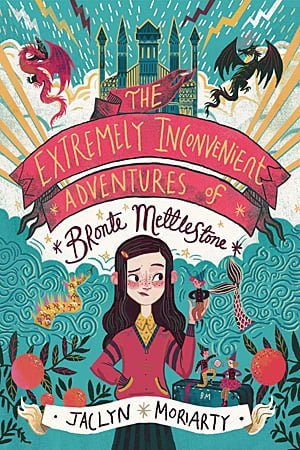
The Extremely Inconvenient Adventures of Bronte Mettlestone by Jaclyn Moriarty
Jaclyn Moriarty is one of Amy’s favorite living writers: quirky and unexpected, and always with strong themes of the value of friendship. Her previous books have been YA, so when Amy realized that her latest, The Extremely Inconvenient Adventures of Bronte Mettlestone, is Moriarty’s first middle grade, she was thrilled to get to discover it together with her own children. For their part, the near-10-year-old shouted, “I really LOVE this book!” frequently in the course of their nightly read-alouds.
10-year-old Bronte has been raised by an aunt, so when they get word that her parents have been killed by pirates, she isn’t particularly disturbed. What IS disturbing is the will her parents have left her: complex instructions to deliver small gifts to each of her other ten aunts, in person, by herself, all over the Kingdoms and Empires. The will is penned on “paper” created by fairies using a kind of magical cross stitch which makes any document written on it hold a binding enchantment, so if Bronte deviates from the instructions, her hometown will be destroyed.
Bronte’s adventures (or sometimes lack thereof) vary from aunt to aunt, but in each, she discovers colorful characters (some not human), unexpected challenges, delightful new foods (her parents’ will also contains many directives about trying certain foods), magic, and intriguing new knowledge about her family. There are pirates and dragons, boarding schools and spellcasters, swimming and soccer, magical music and bad detective work—in other words, something for everyone in this fun book.
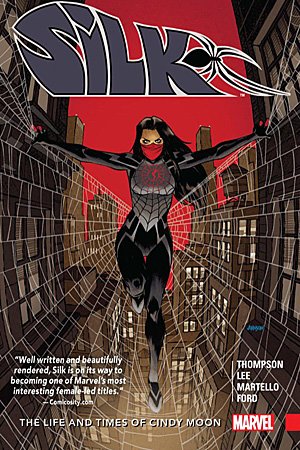
Silk Volume 0: The Life And Times Of Cindy Moon by Robbie Thompson, Art by Stacey Lee
Marvel in 2015 was a dark and mysterious time. For some unknown reason, Marvel had started a few different ongoing titles…and then ran its Secret Wars event, which ended the Ultimates universe, and in general, made even less sense than DC’s Crisis on Infinite Earths. Silk is one of those short-lived series that ended after just five issues. After Secret Wars, it got picked up again. When Kay sat down to read Volume 1, she actually found out there was a Volume 0: The Life And Times Of Cindy Moon. This is one of those things that makes comic book fans just…sigh.
Cindy Moon is a Korean-American character in the Spider-family. She was bitten by the same radioactive spider that bit Peter Parker, and she ended up with a similar power set. For various reasons that this volume doesn’t make particularly clear, Cindy ended up locked inside of a bunker for a decade “for her own safety” or something. She’s now out, fighting crime, and trying to find her family.
The writing by Robbie Thompson is absolutely delightful; Cindy’s spent a decade away from the world, so she’s not sure on her witty comebacks. “That’s like a Pokemon name. Is Pokemon still a thing? Asking for a friend.” Stacey Lee’s art is always stellar, and this book really showcases her style. Cindy fights in ways that are very different from Peter; she’s faster, but not quite as strong. Peter does show up to talk and give advice a couple of times, but there’s never a sense that he’s taking over the book. Just checking up on his friend. Who is kind of his ex? It’s complicated.
And through all of this, we have the background of whether or not Cindy’s going to find her family. The last issue is incredibly forced, needing to wrap up before Secret Wars, but still managed to be moving and a really good read.
GeekMom received some titles in this collection for review purposes.
